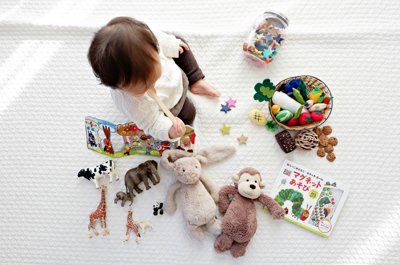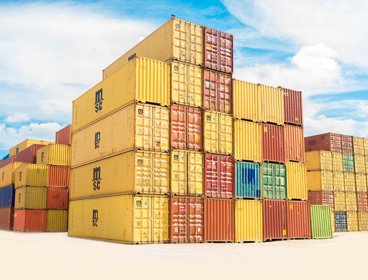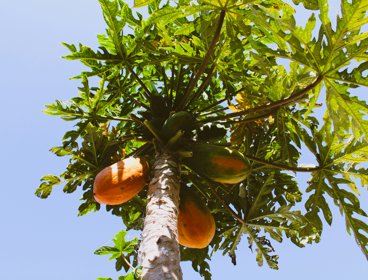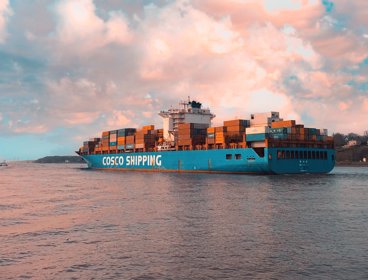Her work focuses on commodities and consumption as well as various aspects of China’s development, and she has published many works on these topics. Before becoming an academic, Alison was a radio and TV presenter for many years. She has a new book ‘On the Commodity Trail’ which follows the way cheap goods end up on our high streets. We asked her about these trails and the effect they have on what we buy as well as the effect we have on them.
What is a ‘Commodity Trail’?
A commodity trail is the journey a commodity takes from where it is made to where it ends up. Some thinkers refer to this as a commodity’s life cycle – its journey from creation to being used up, worn out or thrown away. Arjun Appadurai drew on this kind of thinking when he brought together various authors to write the book The Social Life of Things in 1988, and this is now a classic work in the area of commodity theory. The trail of the commodities I followed began on waste dumps in China and moved through factories, wholesale markets, ports, bargain stores in developed countries and consumers’ homes.
How did you go about starting to research the ‘Commodity Trail’ for a particular object?
I began by speaking to store managers about where they ordered their stock. They were all very clear that almost all of it came from China and many of them mentioned a website called alibaba.com. Alibaba is a Chinese online wholesaler that boasts an eighty percent share of the Chinese online market as well as being valued at more than Amazon, Facebook, IBM and Intel combined. I started to trawl the website for the objects I commonly saw in pound stores and realised very quickly that they could almost always be found on there. It also became very clear that many of the factories that made such products were in a specific part of China: Zhejiang province. I then looked at freight and shipping routes using the port information of various deep-water ports and found that the most common route from Zhejiang province to the UK was via Shanghai to Felixstowe which is the UK’s biggest port. So, with a broad picture of a commodity trail sketched out, I wanted to delve deeper and decided I needed to go to Zhejiang, to Shanghai and to Felixstowe to find out more.
How did you decide which objects to follow?
I knew from the start that I wanted to follow cheap products. There have been some brilliant studies into what you might call ‘classic’ commodities – most famously Sidney Mintz’s book on sugar – but I wanted to expose a phenomenon I felt was indicative of the times we live in; namely our preoccupation with buying cheap stuff! Deciding which cheap commodities to follow though was very difficult and I actually followed far more than are detailed in the book. In the end I found myself drawn to those commodities that bucked the trend of disposability – objects that had stronger cultural connotations and that people became very attached to. They are in many ways a-typical of pound store commodities more generally, but in being a-typical they helped expose the typical attitudes and motivations of shoppers too.
Which of the eight objects you followed did you decide was the most global and why?
I think the ship-in-a-bottle is the most global, as it is so symbolic of the age of empire-building and the trade routes carved out as a result. The kinds of ships represented in the typical ship-in-a-bottle are sail ‘clippers’ – so called because they could clip time off long journeys across the globe in the 19th century. Clippers were most famously used by British traders bringing tea back from China – tea they had often managed to purchase by illegally selling opium and causing in the process a significant percentage of the coastal population of China to become addicted. This situation led to the famous opium wars and is why Hong Kong was annexed to Britain (and only returned to China in 1997). Ships-in-bottles became common things for sailors to make on long trading voyages. The fact that China itself is now making a commodity that has such negative connotations in its own history in order to sell back to the West is fascinating, and a truly global story.
We all know cheaper goods can be a false economy as they may not last as long. Why do we continue to buy them?
Sometimes people buy goods from pound stores because they genuinely think they are the same products as elsewhere but cheaper. This is rarely the case. Most bargain stores or pound stores work on the basis of a few carefully chosen ‘loss leaders’ that attract customers but do not make a profit (and so are genuinely cheap for what they are), scattered amongst goods that do make a profit. They either make a profit because they are precisely not the same as those elsewhere or because they are actually priced higher than elsewhere but we assume they will be cheaper because they are set in the context of a pound store. On a deeper psychological level, many people shop in pound stores precisely because they do not want the product to last and want a guilt-free spend on something they feel fine about throwing out when they are sick of it. Many of those I spoke to found great pleasure in the ‘simplicity’ of this kind of shopping.
You present quite a neat cyclical trail of a commodity – made, brought, enjoyed, recycled, remade – but are some of the processes more sinister?
Absolutely. The commodity trail of cheap goods survives because it is incredibly good at withstanding small catastrophes all the time. In fact I argue that its ‘flow’ is made up of numerous small ruptures. The hardest part of the trail is experienced by the waste collectors who try to sell bits of scrap metal and plastic to (often informal) recycling plants. These workers are most often rural migrants who have no rights to housing or health in the urban areas. Some of them survive by living in slum-like conditions on or near the dumps. There are also risks for those working in manufacturing and at the ports as industrial accidents are common. The captains of container ships are also sometimes under threat from pirates and it is not uncommon for groups of migrants to be found in shipping containers; representing their desperate and sometimes fatal attempt to leave their country of origin.
Who are the winners and losers within most commodity trails?
When it comes to the low-end commodity trail, the winners are the retailers. They easily make the most profit on each product they sell. In comparison the manufacturers make less than half of what the retailers make per unit. Therefore one can see that value is being added as the product travels from east to west. This is not necessarily to say that the manufacturers are ‘losers’ as such, as the cost of living is less in China and many manufacturers do very well. The real losers are the waste collectors as they are the most trapped in their own circumstances and have the least control over their livelihoods.
What surprised you most in your research?
One of the most surprising things was how there is a very different logic in China when it comes to Intellectual Property Rights (trademark and copyright protection). It is not always seen as in the best interests of a manufacturer to agree to the kind of protection that is automatically put in place in developed countries. In Zhejiang this is because manufacturers want to be able to change what they produce quickly and without hassle in order to jump on the latest trend or take on a big order. Overall though what struck me most was how in both China and the UK it is those with low economic means who, in order to maintain the health of the economy, are being encouraged by their governments to spend. This is true of the poorer rural residents in China and also for pound stores in the UK, which appear in all but the most affluent areas but have seen a steady growth in number throughout the recession of the last few years.
References
Appadurai, A. (1988) The Social Life of Things, Cambridge University Press
Mintz, S. (1986) Sweetness and Power, Penguin
Hulme, A. (2014) Empire in a Bottle: Capturing memories of Victoriana, kitsch and the heyday of the seaside, The Journal of Decorative and Propaganda Arts
Key Words
Commodity
A good that is manufactured and sold for profit.
Containerisation
The process by which goods are shipped all over the world using container based shipping.
Globalisation
Increasing interconnectedness between people and processes in different countries.
Lesson Ideas
Students can choose an everyday household object and try to trace its origin and likely commodity trail. Comparisions can be made between objects of different types (such as furniture verses electrical hardware) and students can see if there are any patterns that link types of objects with certain places.
Through research, students can draw a timeline for a commodity that in its design, manufacturing and market has changed its geographical location over time. This can be transposed onto a map and compared with other commodities.
Students can survey the location of ‘pound stores’ in their local area. They can investigate whether there is a geographical bias for their location and through land use analysis suggest reasons for any patterns they notice.
Links
Alison’s new book ‘On the Commodity Trail’
Alibaba.com’s business statistics
Alison was interviewed in February 2015.




